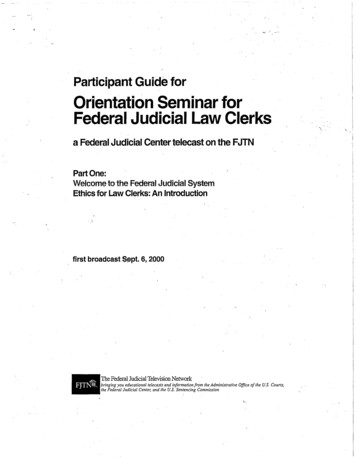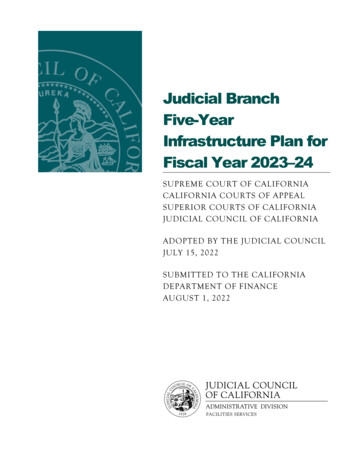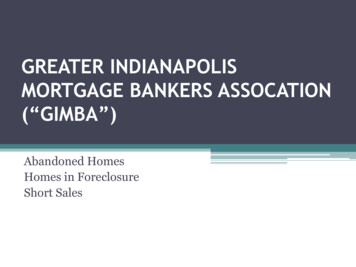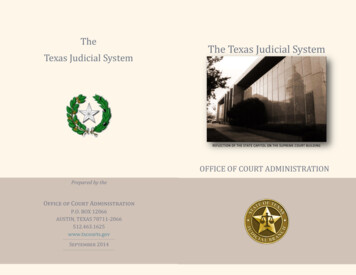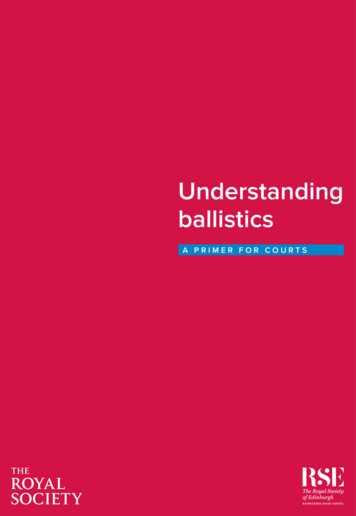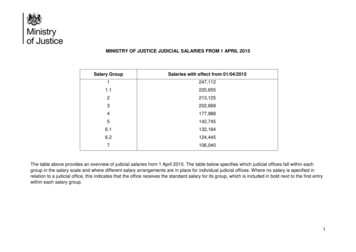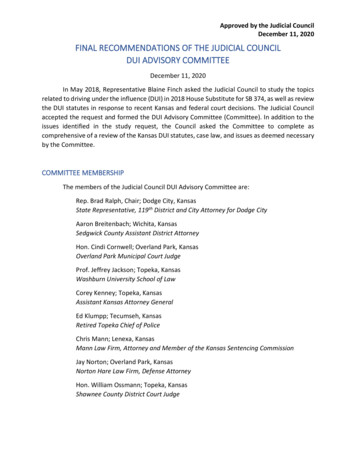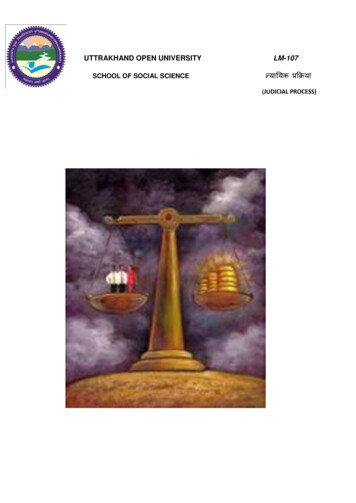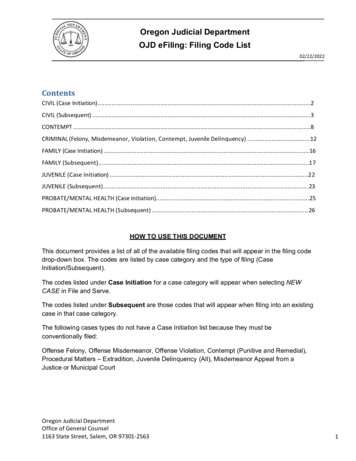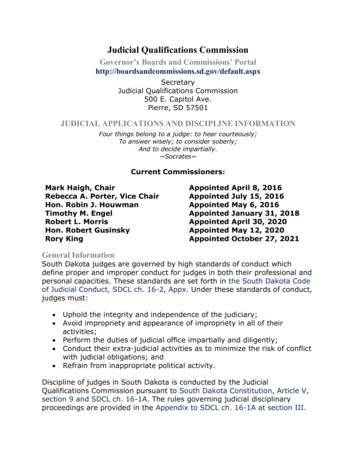
Transcription
Provide the borrower with one or more direct means ofcommunication with the single point of contact.(Cal. Civ. Code § 2923.7.)The lender must ensure that the borrower’s application and supportingdocuments are competent and reliable (Cal. Civ. Code § 2924.17).ORDER A TITLE SEARCHBefore beginning foreclosure, the lender must conduct a title searchto identify liens and other encumbrances that affect title to the realproperty.Liens for property taxes and certain homeowner association fees,should be paid to protect the lender’s interest in the real property.The lender should also conduct a search of the bankruptcy courtrecords to determine whether the borrower has filed for bankruptcy.If the search reveals that a bankruptcy has been filed, the foreclosureaction must stop until the lender applies for and is granted relieffrom the automatic stay (11 U.S.C. § 362). 2020 Thomson Reuters. All rights reserved.
Residential Foreclosures (Non-Judicial) (CA)CONSIDER APPOINTING A RECEIVERRECORD A NOTICE OF DEFAULTTo the extent a property is in danger of waste or deterioration, alender may move for the appointment of a receiver to protect andpreserve the property.The first step to initiating a non-judicial foreclosure sale under a deedof trust containing a power of sale is for the trustee to record a noticeof default. The trustee cannot record the notice of default until atleast 30 days after either:Lenders may seek a receiver to collect rents (relating to residentialrental property) or to protect and preserve the property.A receiver is responsible for paying: Real estate property tax. Property insurance for the residence. Homeowner association or condominium association dues. The lender’s initial contact with the borrower to explore foreclosureprevention options. The lender completes the CAHOBOR due diligence requirements.The notice of default must include all the following: A statement identifying the deed of trust, including the borrower’sname, recording information and legal description.The California Code of Civil Procedure and Rules of Court governreceiverships (Cal. Civ. Proc. Code §§ 564 to 570; Cal. Rules ofCourt, rules 3.1175 to 3.1184). For more information on receivershipsin California, see State Q&A, Provisional Remedies: California(W-000-3315). A statement that the borrower is in default or has breached theReceiverships in residential foreclosures may be rare but are animportant tool to consider when the property is abandoned or isotherwise at risk if left in the hands of the borrower. If the default is curable, a description of the steps necessary andNON-JUDICIAL FORECLOSURENon-judicial foreclosure is a contractual right arising only wherethe borrower expressly grants the lender a power of sale in thesubject deed of trust. The power of sale clause allows a lender toforeclose the security interest and sell the secured property if theborrower is in breach of a material obligation under the terms ofthe promissory note, the deed of trust, or another contract, withoutcourt proceedings. (Biancalana v. T.D. Serv. Co., 56 Cal. 4th 807,813 (2013).)Examples of material breaches that can lead to foreclosure include: Failure to make timely payments on the promissory note. Failure to keep the secured property insured. Failure to pay property taxes when due. Transfer of title or interest in the secured property to certainparties without prior written consent of the lienholder.In California, deeds of trust typically contain a power of sale.Mortgages in California generally do not contain a power of sale.A beneficiary under a deed of trust may not simultaneously pursue asuit on the promissory note and foreclose non-judicially. In California,the beneficiary is limited to one form of recovery (known as the “oneaction” rule). (Cal. Civ. Proc. Code § 726(a).)deed of trust. A description of the breach or event of default. A statement that the trustee intends to sell the property if theborrow §§ 1946.2 and 1947.12.)6 Oakland. Richmond. San Francisco. San Jose. Santa Cruz Santa Monica. Thousand Oaks. Union City. West Hollywood.Counsel for the successful bidder should verify with the applicablemunicipality before beginning any actions to remove a tenant(or other occupant) after a foreclosure sale.Disbursement of Sale ProceedsWithin 30 day following the sale, the trustee must send a written noticeof surplus proceeds to all parties with an interest in the property. Theinterested parties have 30 days after the trustee sends the notice tosubmit a claim to the surplus proceeds. After reviewing the claims thetrustee may: Distribute the sale proceeds in the order determined by California law. Deposit the sale proceeds with the clerk of the superior court fordetermination of distribution.(Cal. Civ. Code § 2924j.)California law prescribes the following order of priority: To the costs of the sale. To the payment of the obligations secured by the deed of trust. To the payment of any junior liens or encumbrances secured bythe foreclosed property. 2020 Thomson Reuters. All rights reserved.
ResidentialResidential ForeclosuresForeclosures (Non-Judicial)(Non-Judicial) (CA)(CA) Thebalance, if any, to the trustor or the trustor’s successor ininterest. In the event the property is sold or transferred to another,to the vested owner of record at the time of the trustee’s sale.(Cal. Civ. Code § 2924k.)DEFICIENCY JUDGMENTSDeficien
The lender may begin the foreclosure process 30 days after satisfying one of these pre-foreclosure requirements (Cal. Civ. Code § 2923.5(a)(1)(A).) CAHOBOR also prohibits the lender from simultaneously working with the borrower on foreclosure prevention alternatives (loan modifications) and moving forward with the foreclosure process
